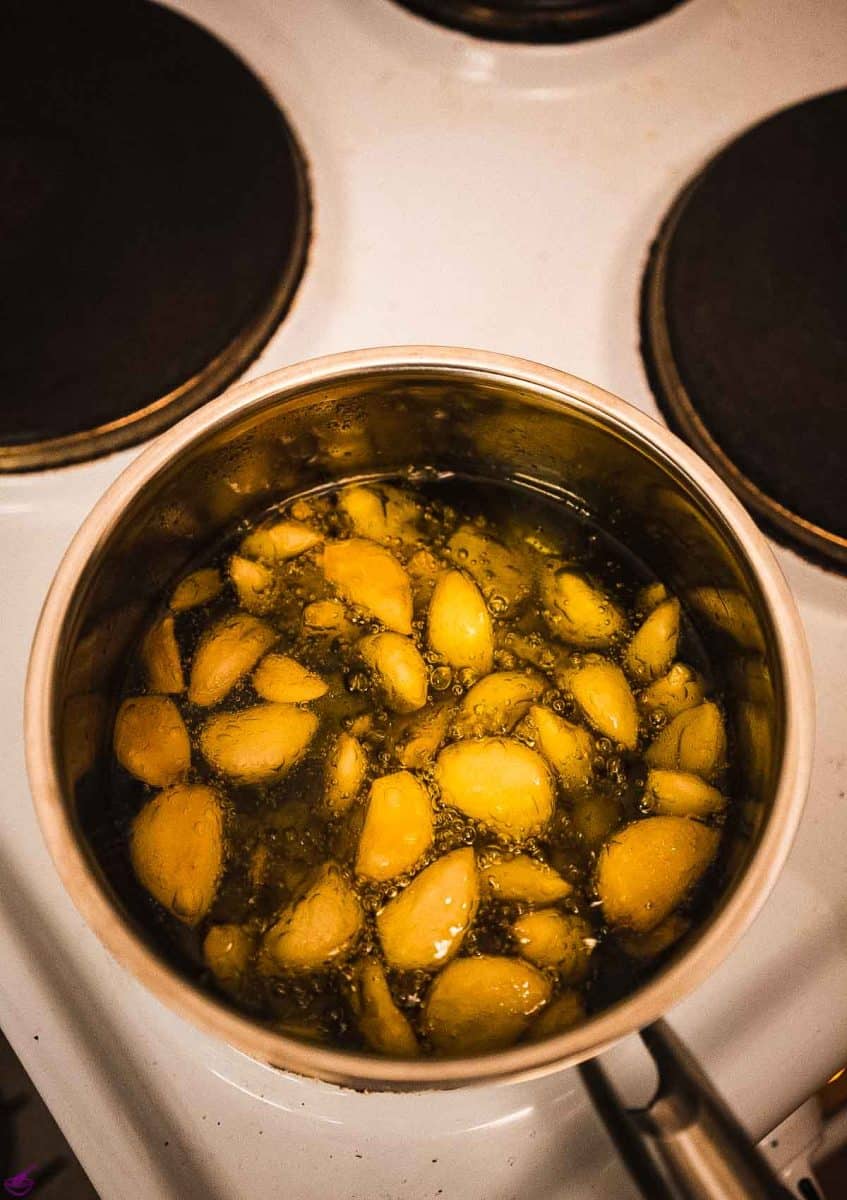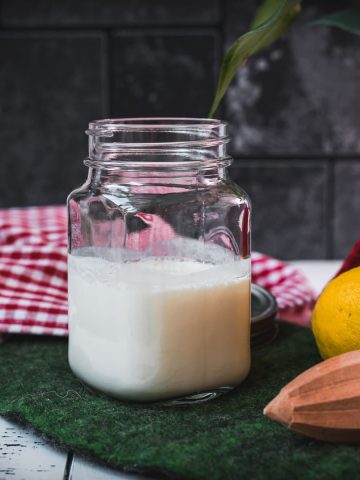If you love the taste and texture of fried food, you may find yourself wondering how many times you can reuse fry oil. Fortunately, proper use of fry oil means you can use it multiple times, saving you time and money.
Important considerations, including the frying temperature, the kind of oil, and the type of food being fried, must be made in order to determine how many times fry oil may be reused.

This is a delightful guest post by Olivia Brown. Thank you, Olivia! 💚
Jump to:
What Happens to Fry Oil When You Use It?
Oxidation is a process that breaks down the oil into smaller molecules; this occurs when oil is heated. This results in less stable oil, which has a lower smoke point.
When oil begins to smoke, it has degraded and is no longer suitable for frying, meaning it has reached the "smoking point,"
Fry oil builds up food particles, moisture, and other contaminants over time, which can lead to spoilage or the growth of dangerous bacteria. Food that absorbs too much oil, rancid oil, and an increase in the likelihood of contracting a foodborne illness can all result from this.
How Many Times Can You Reuse Fry Oil?
The answer varies depending on several factors. How many times you can reuse fry oil is not subject to any strict regulations. Any source that states unequivocally how many times oil can be reused should be taken with a grain of salt.
It's simple to determine when to change your oil, and even better, there are some excellent things you can do to prolong its useful life! Now, factors that can determine how many times you can use your oils are:
- Type of Oil
Some oils are more stable than others and can withstand repeated use better. For example, peanut oil, canola oil, and vegetable oil are all stable choices for reuse multiple times.
In contrast, oils with lower smoke points, such as olive, sesame, or coconut oil, may not offer the same benefits.
- Frying Temperature
The temperature at which you fry your food also affects the number of times you can reuse your oil. The oil can only be used a limited number of times at higher temperatures since it degrades more quickly.
The oil is likely to degrade after just one or two uses when frying at temperatures above 375 °F, although temperatures below 350 °F may allow for multiple applications.
- Type of Food
Different foods release different amounts of water, starch, and protein when fried, which can cause the oil to break down faster. For example, fried chicken can release more water than French fries, which could result in the oil deteriorating more quickly.
When frying breaded or battered dishes, you may use the oil up to three or four more times. Oil may be used to cleanly fry goods like potato chips at least eight times and perhaps much more frequently if it is being refilled with fresh oil.
In general, you can use fry oil safely two to three times if you properly filter and store it, although this can vary depending on the factors mentioned above.

Signs That Fry Oil Needs to Be Replaced
It's important to understand when to discard fry oil, even if it can sometimes be reused. You should replace your fry oil if:
- It has a Dark Color, Strong Odor, or Strange Taste: The appearance, smell, or taste of your oil changes when it starts to break down. It's time to change your oil if it seems browner or darker than normal, smells bad, or tastes rotten or metallic.
- It Smokes Excessively When Heated: If your oil begins to smoke excessively when heated, it has reached its smoke point and is no longer safe to use for frying.
- It Feels Thick or Sticky to the Touch: Your oil may become thick or sticky to the touch when it's time to replace it. This is due to the buildup of food particles and other contaminants in the oil.
- There Are Signs of Spoilage: If you see mold growing on your oil or notice a sour smell, it's time to replace it. These signs indicate that harmful bacteria are present that could cause foodborne illness.
Ignoring these signs can result in food that tastes unpleasant, has an oily texture, and can potentially cause illness.
How to Reuse Fry Oil Safely
If you want to reuse fry oil safely, follow these tips:
1. Filter the oil, cool it, and store it.
To get rid of leftovers and dirt, filter the oil after each use using a cheesecloth or fine mesh strainer. This will prevent these particles from burning and causing off-flavors in your next dish. Then follow these steps:
- Allow it to cool
- Pour into a sealed container
- Keep away from light, heat, and moisture
- Store in a fridge
- If not in use soon, freeze it
- Check the oil before reusing
2. Check for signs of spoilage and discoloration
Check the oil for deterioration or discoloration before reusing it. To determine if it is still suitable for frying, smell, touch, and even taste it. When in doubt, throw out the oil and start again with new oil.
3. Don't Mix Different Oils
Avoid blending oils from different sources or brands, as this can cause an uneven cooking experience and impact the overall quality of the food. For example, when baking Bisquick Crepe, be careful not to mix the oil used with the ones used in other French fries.
Conclusion
In conclusion, reusing fry oil can be a great way to save time and money while enjoying delicious fried food. However, it's crucial to do it safely and correctly to avoid health risks and inferior-quality dishes.
Factors that affect the number of times you can reuse your oil include the type of oil, frying temperature, and type of food being fried. Remember to look out for signs of spoilage and follow the tips for safely reusing fry oil. Happy frying!
⛑️ Food Safety
- Cook to a minimum temperature of 165 °F (74 °C)
- Do not use the same utensils on cooked food, that previously touched raw meat
- Wash hands after touching raw meat
- Don't leave food sitting out at room temperature for extended periods
- Never leave cooking food unattended
- Use oils with high smoking point to avoid harmful compounds
- Always have good ventilation when using a gas stove
For further information, check Safe Food Handling - FDA.






















Comments
No Comments